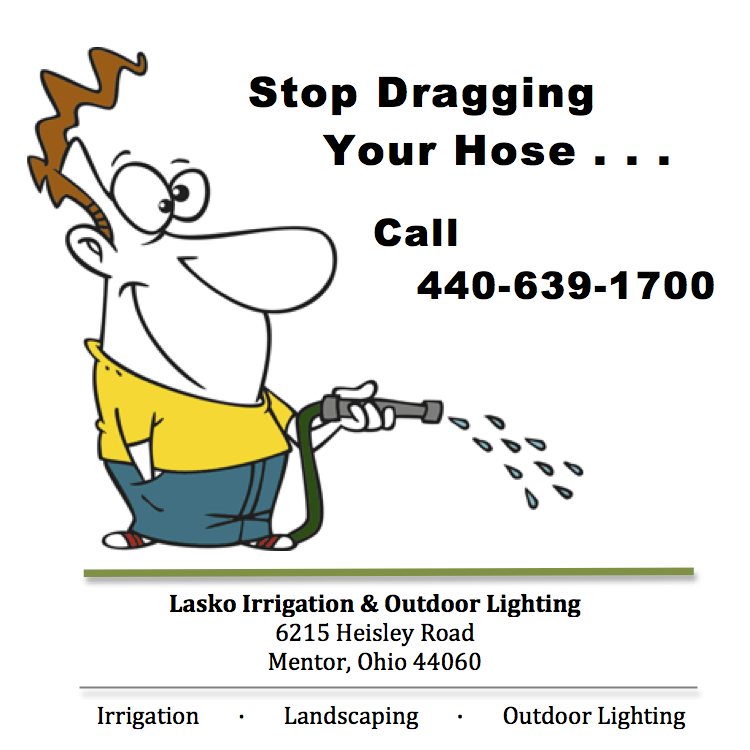
by Tom Barrett | Feb 6, 2019
Are You Ready for Flood Season?
Wintertime in Ohio means flood season.
Take last February, for instance, when the Ohio River crested over 60 feet, making it the worst flood Cincinnati had seen in more than 20 years — since the deadly “Flood of 1997.”
 As the calendar turned from February to March of that fateful year, a relentless 12-inch downpour over the southern and eastern parts of the state caused the Ohio River to crest at 64.5 feet. As a result, much of downtown Cincinnati remained under three to four feet of floodwater for several days.
As the calendar turned from February to March of that fateful year, a relentless 12-inch downpour over the southern and eastern parts of the state caused the Ohio River to crest at 64.5 feet. As a result, much of downtown Cincinnati remained under three to four feet of floodwater for several days.
The 1997 flood was the worst flooding event since 1948. And before it was all over, 24 Ohioans had lost their lives. Total damage to southern Ohio communities was estimated at more than $155 million.
NWS Historical Flood Data
Altogether, the Ohio River at Cincinnati has risen higher than 60 feet 22 times since the National Weather Service began keeping records about 150 years ago.
 Here are the agency’s top 10 historic crests for the Ohio River:
Here are the agency’s top 10 historic crests for the Ohio River:
(1) 80.00 ft on 01/26/1937
(2) 71.10 ft on 02/14/1884
(3) 69.90 ft on 04/01/1913
(4) 69.20 ft on 03/07/1945
(5) 66.30 ft on 02/15/1883
(6) 66.20 ft on 03/11/1964
(7) 65.20 ft on 01/21/1907
(8) 64.80 ft on 04/18/1948
(9) 64.70 ft on 03/05/1997
(10) 63.60 ft on 03/21/1933
And, as you can see, seven of these top 10 events occurred in winter.
At the top of the list — and by far the worst flooding disaster ever to hit the state — was the Great Flood of 1937.
The Big One
In mid-January of 1937, tropical air masses collided with polar air masses over the Ohio River Valley and dropped an estimated 165 billion tons of water onto the Ohio and Mississippi River Basin. This was enough water to cover more than 200,000 square miles of land to a depth of 11-plus inches.
Between January 13 and January 25, six to 12 inches of rain fell over much of Ohio. Never before or since has such an enormous amount of rain fallen over such a large area of the state. (January 1937 remains the wettest month ever recorded in Cincinnati.)

Fifteen to 20 percent of the city of Cincinnati itself was water-covered, leaving thousands homeless. Parts of Cincinnati remained under water for 19 days. But much of the city outside of the flooded area was also paralyzed, due to lack of fresh water, electricity and heat. An estimated 100,000 residents of the Cincinnati tri-state area were permanently displaced by the flood.
USCG to the Rescue
In response, and at the direction of President Franklin Roosevelt and his Secretary of the Treasury, the U.S. Coast Guard mounted the largest relief expedition in the history of the service.
Rescue operations extended from January 19 through March 11 and involved 351 boats of all types, as well as 12 aircraft, 10 of which were amphibious. The USCG also established an emergency radio network that included 244 stations.
 It didn’t take long for rescuers to realize that the winter temperatures presented a dilemma. Floating ice in the northernmost parts of the river made navigation particularly hazardous. Rescue crafts sometimes capsized.
It didn’t take long for rescuers to realize that the winter temperatures presented a dilemma. Floating ice in the northernmost parts of the river made navigation particularly hazardous. Rescue crafts sometimes capsized.
Then — when it seemed that things could not get any worse — came “Black Sunday.” On January 24, the floodwaters in Cincinnati caused thousands of gallons of oil and gasoline to spill from storage tanks. The fuel ignited, resulting in the bizarre spectacle of burning buildings surrounded by water.
In order to extinguish the flames, the Coast Guard boats pumped the floodwaters into the already inundated buildings.
The Aftermath
By the time the floodwaters finally receded, the enormity of the devastation — stretching from Pittsburgh to Cairo, Ill. — was revealed. One million people were left homeless, 385 were dead and property losses reached $500 million (about $9 billion in 2018 dollars).

The scale of the 1937 flood was so unprecedented that civic and industrial groups lobbied national authorities to devise a comprehensive plan for flood control. The plan included the creation of more than 70 storage reservoirs to reduce Ohio River flood heights.
The Army Corps of Engineers finally completed the project in the early 1940s. Since then, the new facilities have drastically reduced flood damages along the Ohio. But, sadly, some communities never fully recovered from this epic disaster.
Sources:
WCPO Cincinnati
Cincinnati Enquirer
National Weather Service
Coast Guard Compass

by Tom Barrett | Jan 14, 2019
SiteOne University Offers Training
and Educational Seminars
Join SiteOne on February 14, 2019, for a full day of learning and networking, while earning valuable CEUs.
Learn about industry updates specific to your market, as well as the newest products to build your business.
Event Details
 When:
When:
Thursday, February 14, 2019
7:45 a.m. to 4:00 p.m.
Where:
LaCentre Conference & Banquet Facility
25777 Detroit Road
Westlake, OH 44145
Cost:
$25.00 per person (includes all educational courses, lunch and trade show entry.)
Paid attendees will receive a voucher for $50.00 off their next purchase of $250.00 or more. You will receive your voucher from SiteOne at the door when you check in for the University. (Limit one per transaction. Cannot be combined with any other offers, discounts or special promotions.) You must register online in order to attend this event! TO REGISTER…

Class Offerings
The 2019 SiteOne University-Cleveland will offer classes in the following areas:
 Irrigation
Irrigation- Hardscapes
- Lawn Care
- Pest Control
- Outdoor Lighting
- Sustainable Solutions
- Industry Trade Show
Click here to view the day’s agenda.
About SiteOne
Beginning as John Deere Landscapes in 2001, SiteOne Landscape Supply is now the nation’s largest supplier of wholesale goods for green industry professionals in the United States and Canada. It also offers irrigation design services for its designated partners. The company went public in 2016.

by Tom Barrett | Jan 8, 2019
Now’s the Time to Become a CIT!
On February 28, 2019, Wolf Creek Company is sponsoring a full-day CIT training session.
You’ll learn about gluing and repairing PVC pipe, installing nozzles and adjusting heads, setting and repairing electric valves, and field and controller wiring techniques.
This is a recommended review for the CIT exam. The session will begin at 8:00 a.m. at Wolf Creek Company, 6700 Huntley Road in Columbus, Ohio.
Cost is $100 per attendee, and seats are limited!
Contact your Wolf Creek Representative
for more information.

Why Certification?
Certification gives you a competitive edge. By becoming a Certified Irrigation Technician you can:
 Add instant credibility with customers and employers.
Add instant credibility with customers and employers.
 Increase job opportunities.
Increase job opportunities.
 Demonstrate your commitment to efficient water management.
Demonstrate your commitment to efficient water management.
 Qualify for the EPA WaterSense program.
Qualify for the EPA WaterSense program.
CIT Overview
CITs are field technicians who install, maintain and repair irrigation systems. Typical duties include:

 Cutting and joining pipe, as well as knowing the limitations of different piping systems and understanding basic hydraulics.
Cutting and joining pipe, as well as knowing the limitations of different piping systems and understanding basic hydraulics.
 Laying out and installing piping and water delivery components; backflow prevention components; mechanical, hydraulic and electrical irrigation controls; and other irrigation system components.
Laying out and installing piping and water delivery components; backflow prevention components; mechanical, hydraulic and electrical irrigation controls; and other irrigation system components.
 Troubleshooting and repairing irrigation components and systems.
Troubleshooting and repairing irrigation components and systems.
Becoming a Certified Irrigation Technician
To become a CIT, you must:
 Register for the exam. Recommended: six months or 1,000 hours of irrigation-related field experience.
Register for the exam. Recommended: six months or 1,000 hours of irrigation-related field experience.
 Pass the irrigation technician exam. The three-hour exam includes 100 equally weighted, multiple-choice questions on basic irrigation principles, basic electrical principles and basic hydraulics.
Pass the irrigation technician exam. The three-hour exam includes 100 equally weighted, multiple-choice questions on basic irrigation principles, basic electrical principles and basic hydraulics.
 Comply with the Select Certified Code of Ethics.
Comply with the Select Certified Code of Ethics.
 Remain in good standing. CITs must submit 20 continuing education units per two-year cycle.
Remain in good standing. CITs must submit 20 continuing education units per two-year cycle.
CIT Exam Fees
 Irrigation Technician Exam Fee — $175 (IA Member), $300 (Nonmember)
Irrigation Technician Exam Fee — $175 (IA Member), $300 (Nonmember)
- Exam Retake Fee — $175 (IA Member), $300 (Nonmember)
- Annual Renewal Fee (one certification) — $50 (IA Member), $100 (Nonmember)
- Annual Renewal Fee (two or more certifications) — $100 (IA Member), $150 (Nonmember)

by Tom Barrett | Jan 2, 2019
Join Us February 27 at the Ohio Statehouse!
Ohio Green Industry Advocacy Day is hosted every other year by the Ohio Nursery and Landscape Association (ONLA) and the Ohio Irrigation Association.
You won’t want to miss this unique opportunity to network with colleagues, meet with state legislators, and make your voice heard on issues critical to irrigation professionals.
Benefit of Membership
 As one of the sponsors of this year’s Green Industry Advocacy Day, your Ohio Irrigation Association is counting on you. Legislative and regulatory advocacy is one of the key benefits of OIA membership. By becoming an active participant in legislative events, you strengthen this critical membership benefit.
As one of the sponsors of this year’s Green Industry Advocacy Day, your Ohio Irrigation Association is counting on you. Legislative and regulatory advocacy is one of the key benefits of OIA membership. By becoming an active participant in legislative events, you strengthen this critical membership benefit.
Advocacy Day is your chance to build relationships with two important groups: Green industry business partners, and members of the Ohio legislature and their staff. And who can tell our story better than you?

REGISTRATION
Registration is free to the first 20 Ohio IA members and $89 for non-members (includes lunch). Registration deadline is January 30, 2019.

What to Expect
Here’s what you can expect at this year’s Ohio Green Industry Advocacy Day:
The morning session will feature key legislative speakers (such as ONLA’s Legislator of the Year). You’ll also be briefed on discussion issues for the legislative meetings scheduled in the afternoon.
These meetings with elected officials offer you the opportunity to be a resource to policymakers on key irrigation issues like water quality, water quantity, and environmental reforms. Legislators want to make informed decisions, but in order to do that, the need to hear from us.

YOU possess the knowledge that can help advance decisions favorable to the irrigation industry. Let your voice be heard!
Here’s a tentative schedule for the day:
| 9:00 – 9:30 a.m. |
Registration & Continental Breakfast |
| 9:30 – 10:30 a.m. |
Guest Speaker or Panel Discussion |
| 10:30 – 11:30 a.m. |
Briefing Session
Learn about bills and issues.
Understand how to communicate with
your legislator
|
| 11:30 a.m. – Noon |
Guest Speaker from the Legislature |
| Noon – 1:00 p.m. |
Lunch and Networking |
| 1:00 – 4:30 p.m. |
Pre-scheduled Meeting with Legislators |
| 4:30 – 6:30 p.m. |
Legislative Reception |
Source:
ONLA

by Tom Barrett | Dec 5, 2018
Water for Energy for Water
Water and energy are inextricably linked.
It takes a significant amount of water to create energy. Likewise, it takes a significant amount of energy to extract, move and treat water.
U.S. power plants withdraw 143 billion gallons of fresh water every day. That’s more than the amount withdrawn for irrigation and three times as much as is used for public water supplies.
Water and Electricity
When we think of water and electricity, hydropower is usually the first thing that comes to mind. But power plants that use coal, oil, nuclear energy or natural gas are also water-dependent.

By burning coal or natural gas (or by maintaining a fission reaction), these power plants generate heat. The heat is then used to boil water, produce steam, and turn turbines. Much of the water used by these plants is needed to cool the steam they generate.
Withdrawal vs. Consumption
In order to better understand how much water is used by power plants, we must first define some terms.
 Water “use” by power plants comes in two forms: withdrawal and consumption. Withdrawal refers to the amount of water a power plant extracts from a lake, river, aquifer, or other water source. Power plants that use “once-through cooling” technology withdraw large volumes of water a single time. They then discharge it directly to waste.
Water “use” by power plants comes in two forms: withdrawal and consumption. Withdrawal refers to the amount of water a power plant extracts from a lake, river, aquifer, or other water source. Power plants that use “once-through cooling” technology withdraw large volumes of water a single time. They then discharge it directly to waste.
Withdrawal is important for several reasons:
- Water intake systems can trap aquatic wildlife
- Water withdrawn for cooling (but not consumed) is returned to the environment heated, potentially harming wildlife
- Power plants that tap groundwater for cooling can deplete aquifers.
Consumption refers to the water that evaporates in the cooling process. Consumption reduces the amount of water available for other uses, such as sustaining ecosystems. Plants that use “recirculating cooling” technology tend to have lower rates of water withdrawal, but consume much more of that water through evaporation.
So How Much Water Do Power Plants Use?
A 2013 report published in Environmental Research Letters found that, in the year analyzed (2008), U.S. power plants:
- Withdrew some 50 trillion gallons of water
- Consumed 1.6 trillion gallons of that water
- Used freshwater (non-ocean) sources for 86 percent of those water withdrawals and 96 percent of the water they consumed.
This means that about 100 billion gallons of freshwater is withdrawn daily and several billion gallons consumed.

How does this compare with our other water needs, say, agriculture?
When it comes to withdrawals, power plants are number one. According to the most recent available data provided by U.S. Geological Survey, the power sector is responsible for more than 40 percent of freshwater withdrawals.
On the consumption side, agriculture is the biggest user. (Much of the water used to irrigate fields doesn’t make it back out.)
What Can Be Done?
As climate change continues to affect precipitation and temperature patterns across the country, water-dependent energy production could be inhibited.
 There are several ways we can address the water-related impacts of energy use:
There are several ways we can address the water-related impacts of energy use:
- Designing appliances, buildings, and vehicles to be more energy efficient. This is the simplest and most cost-effective solution. The less energy used, the less water required.
- Retrofitting old coal or nuclear power plants with more water-efficient cooling systems. According to scientists, this could potentially double water consumption, but could reduce water withdrawals to a mere fraction of current use.
- Encouraging (i.e., incentivizing) the expansion of renewable technologies (such as wind and solar energy) that require no water usage.
Sources:
Union of Concerned Scientists
National Conference of State Legislatures
U.S. Dept of Energy
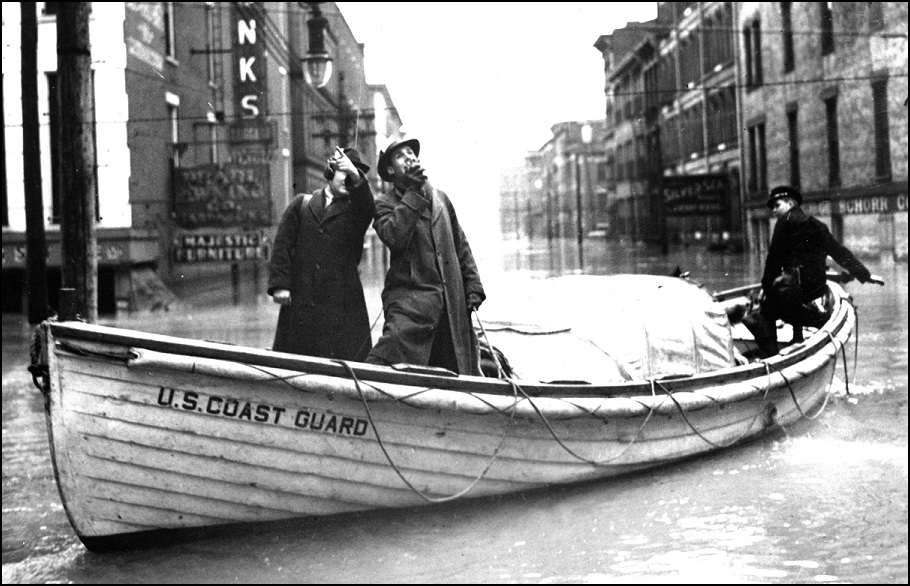
 As the calendar turned from February to March of that fateful year, a relentless 12-inch downpour over the southern and eastern parts of the state caused the Ohio River to crest at 64.5 feet. As a result, much of downtown Cincinnati remained under three to four feet of floodwater for several days.
As the calendar turned from February to March of that fateful year, a relentless 12-inch downpour over the southern and eastern parts of the state caused the Ohio River to crest at 64.5 feet. As a result, much of downtown Cincinnati remained under three to four feet of floodwater for several days.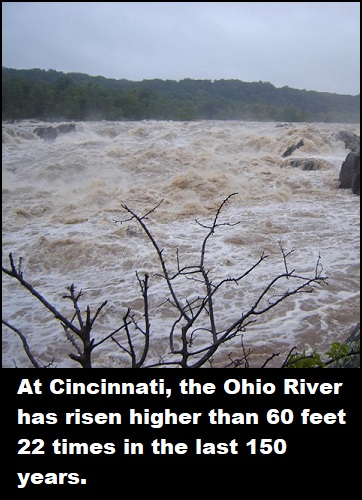 Here are the agency’s top 10 historic crests for the Ohio River:
Here are the agency’s top 10 historic crests for the Ohio River: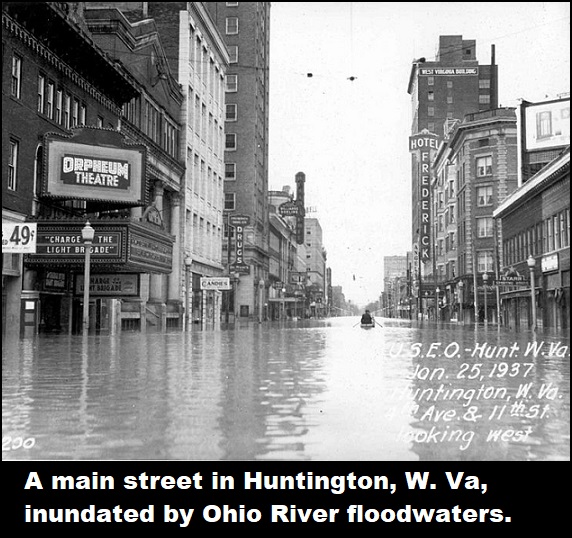
 It didn’t take long for rescuers to realize that the winter temperatures presented a dilemma. Floating ice in the northernmost parts of the river made navigation particularly hazardous. Rescue crafts sometimes capsized.
It didn’t take long for rescuers to realize that the winter temperatures presented a dilemma. Floating ice in the northernmost parts of the river made navigation particularly hazardous. Rescue crafts sometimes capsized.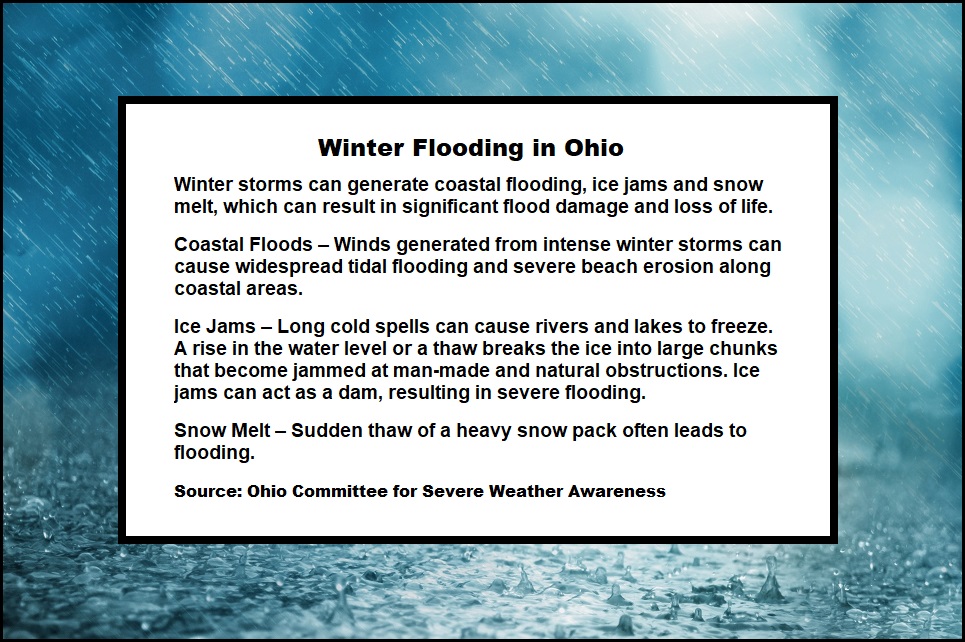
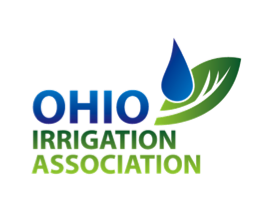
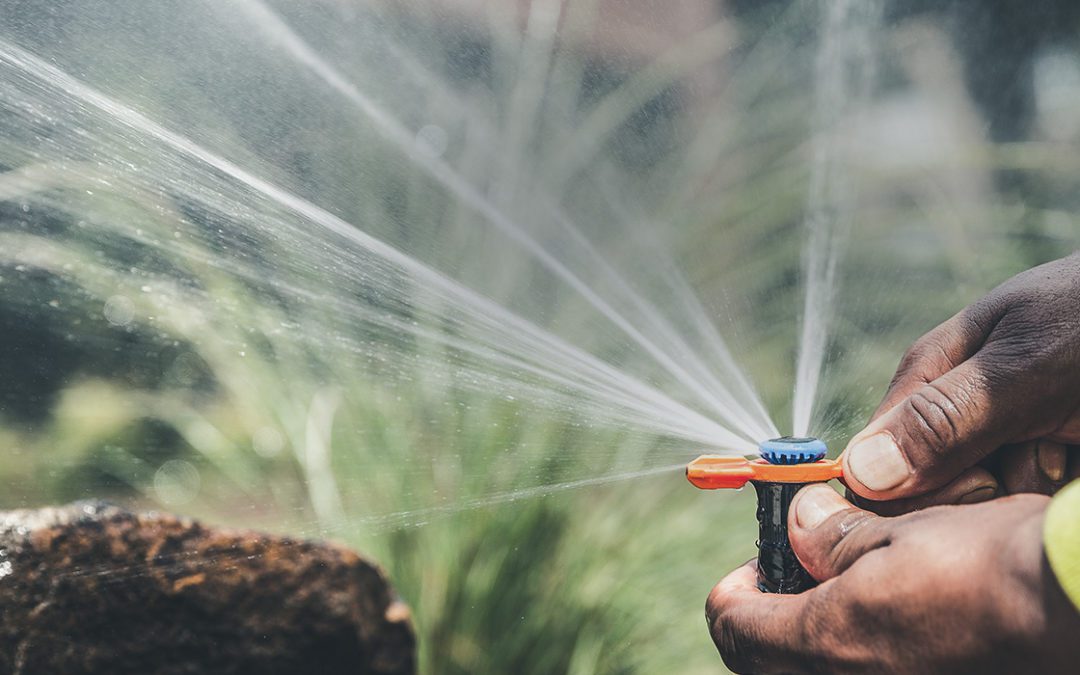



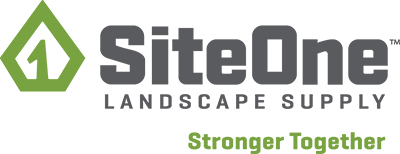
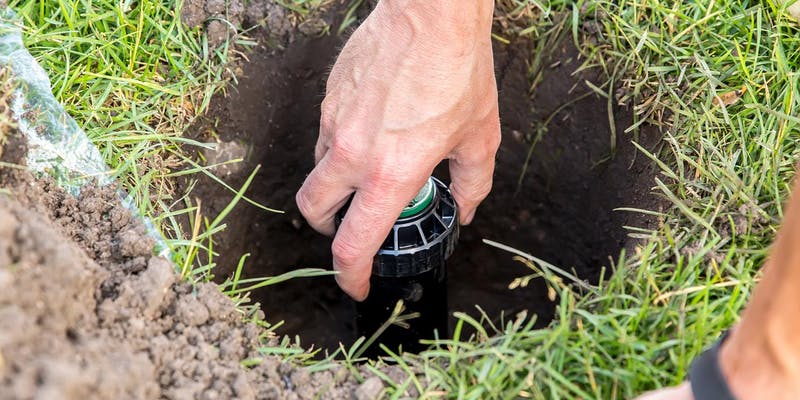


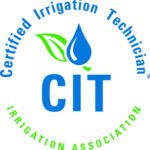

 As one of the sponsors of this year’s Green Industry Advocacy Day, your Ohio Irrigation Association is counting on you. Legislative and regulatory advocacy is one of the key benefits of OIA membership. By becoming an active participant in legislative events, you strengthen this critical membership benefit.
As one of the sponsors of this year’s Green Industry Advocacy Day, your Ohio Irrigation Association is counting on you. Legislative and regulatory advocacy is one of the key benefits of OIA membership. By becoming an active participant in legislative events, you strengthen this critical membership benefit.
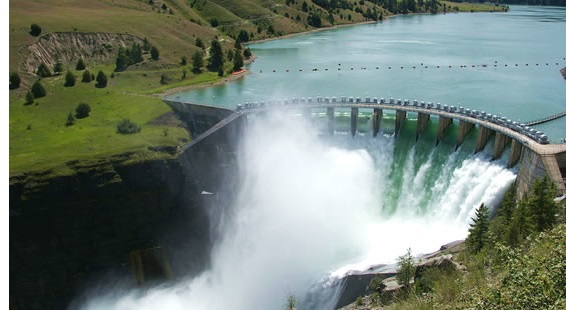
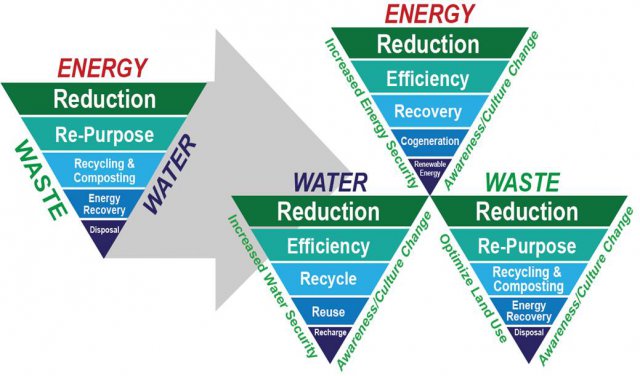
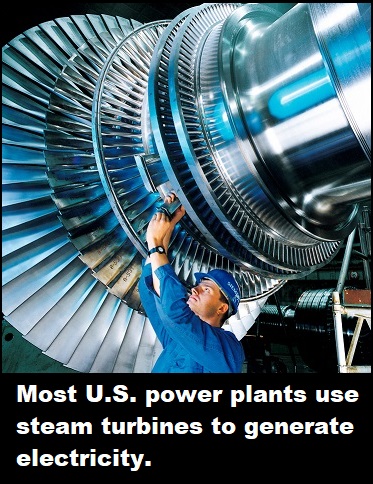
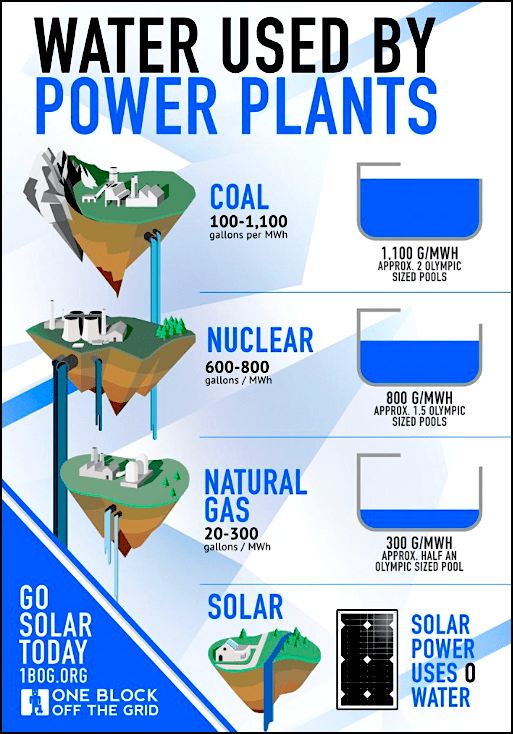
 There are several ways we can address the water-related impacts of energy use:
There are several ways we can address the water-related impacts of energy use:
